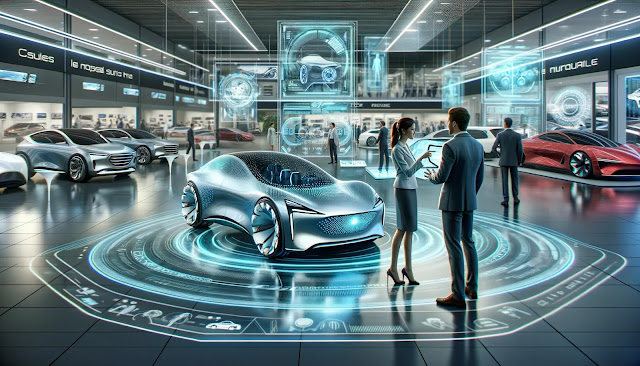The importance of AI in advertising cannot be overstated. It allows advertisers to gain valuable insights into consumer behavior, preferences, and trends, enabling them to create more effective and engaging campaigns. AI also helps streamline the ad buying and selling process, making it more efficient and cost-effective. Furthermore, AI-powered technologies such as chatbots and voice assistants are transforming customer service and engagement, providing brands with new opportunities to interact with their audience.
The history of AI in advertising dates back several decades. In the 1990s, companies started using AI algorithms to optimize ad placements and target specific audiences. However, it was not until the 2000s that AI truly began to make a significant impact on the advertising industry. With advancements in technology and the availability of vast amounts of data, AI became more powerful and capable of delivering personalized and targeted advertisements. Today, AI is an essential tool for advertisers, helping them stay ahead in a highly competitive market.
Personalized Advertising: How AI is Enhancing User Experience
Personalized advertising is a marketing strategy that involves tailoring advertisements to individual users based on their preferences, interests, and behavior. It aims to deliver relevant content to consumers, increasing engagement and conversion rates. AI plays a crucial role in personalized advertising by analyzing vast amounts of data and using machine learning algorithms to understand consumer preferences and predict their future behavior.
One of the key benefits of personalized advertising is that it enhances user experience. By delivering relevant content to consumers, advertisers can create a more personalized and engaging experience, increasing the likelihood of conversion. For example, an online retailer can use AI to analyze a user's browsing history and purchase behavior to recommend products that are likely to be of interest to them. This not only improves the user experience but also increases the chances of making a sale.
AI-powered personalized advertising is already being used by many companies across various industries. For instance, streaming platforms like Netflix and Spotify use AI algorithms to analyze user data and provide personalized recommendations for movies, TV shows, and music. Similarly, e-commerce giants like Amazon use AI to recommend products based on a user's browsing and purchase history. These personalized recommendations not only improve the user experience but also drive sales and customer loyalty.
Predictive Analytics: The Power of AI in Anticipating Consumer Behavior
Predictive analytics is a branch of AI that involves using historical data and statistical algorithms to make predictions about future events or behaviors. In the context of advertising, predictive analytics can be used to anticipate consumer behavior and preferences, enabling advertisers to create more targeted and effective campaigns.
The benefits of predictive analytics in advertising are numerous. By analyzing vast amounts of data, AI algorithms can identify patterns and trends that humans may not be able to detect. This allows advertisers to make more informed decisions about their campaigns, such as which channels to use, what content to create, and when to launch their ads. Predictive analytics also helps optimize ad targeting by identifying the most relevant audience segments for a particular campaign.
Several examples illustrate the power of predictive analytics in advertising. For instance, online retailers can use AI algorithms to analyze customer data and predict which products are likely to be popular in the future. This allows them to stock up on inventory and create targeted marketing campaigns ahead of time. Similarly, travel companies can use predictive analytics to anticipate when customers are most likely to book a vacation and offer them personalized deals and promotions.
Chatbots: The Future of Customer Service and Engagement
Chatbots are AI-powered virtual assistants that can interact with users in a conversational manner. They use natural language processing and machine learning algorithms to understand and respond to user queries and requests. In the context of advertising, chatbots are transforming customer service and engagement by providing brands with a new way to interact with their audience.
The benefits of chatbots in advertising are manifold. Firstly, they provide instant and personalized customer support, allowing brands to address customer queries and issues in real-time. This improves customer satisfaction and loyalty, as users no longer have to wait for a human agent to respond to their inquiries. Secondly, chatbots can collect valuable data about user preferences and behavior, enabling brands to deliver more targeted and relevant advertisements. Finally, chatbots can automate repetitive tasks such as order tracking and appointment scheduling, freeing up human agents to focus on more complex and strategic tasks.
Many companies are already using chatbots to enhance their customer service and engagement. For example, Facebook Messenger allows businesses to create chatbots that can interact with users on their Facebook pages. These chatbots can answer frequently asked questions, provide product recommendations, and even process orders. Similarly, airlines like KLM and Southwest have implemented chatbots on their websites and messaging platforms to assist customers with flight bookings, check-ins, and other travel-related queries.
Programmatic Advertising: How AI is Streamlining Ad Buying and Selling
Programmatic advertising refers to the use of AI algorithms to automate the buying and selling of digital advertising inventory. It involves the use of real-time bidding (RTB) platforms that connect advertisers with publishers, allowing them to buy ad space on websites and apps in real-time. AI plays a crucial role in programmatic advertising by analyzing vast amounts of data and making automated decisions about ad placements.
The benefits of programmatic advertising are numerous. Firstly, it allows advertisers to reach their target audience more effectively by using AI algorithms to analyze user data and deliver ads to the most relevant audience segments. This increases the chances of engagement and conversion, as ads are more likely to be seen by users who are interested in the product or service being advertised. Secondly, programmatic advertising is more efficient and cost-effective than traditional ad buying methods, as it eliminates the need for manual negotiations and reduces the risk of ad fraud.
Several examples illustrate the power of programmatic advertising using AI. For instance, Google's Display & Video 360 platform uses AI algorithms to analyze user data and deliver personalized ads across multiple channels and devices. Similarly, The Trade Desk's platform uses AI to optimize ad placements in real-time, ensuring that ads are shown to the most relevant audience segments. These programmatic advertising platforms not only streamline the ad buying and selling process but also improve campaign performance and ROI.
Voice Search: The Rise of AI-Powered Voice Assistants in Advertising
Voice search refers to the use of voice commands to search for information or perform tasks on digital devices. With the rise of AI-powered voice assistants like Amazon's Alexa, Apple's Siri, and Google Assistant, voice search has become an increasingly popular way for consumers to interact with technology. In the context of advertising, voice search is opening up new opportunities for brands to connect with their audience.
The benefits of voice search in advertising are manifold. Firstly, it provides a more convenient and natural way for users to search for information or make purchases. Instead of typing keywords into a search engine or browsing through websites, users can simply ask a voice assistant to find what they are looking for. This reduces friction in the user journey and increases the chances of engagement and conversion. Secondly, voice search allows brands to deliver personalized and targeted advertisements based on user preferences and behavior. For example, a user who frequently orders pizza through a voice assistant may be shown ads for local pizzerias or pizza delivery services.
Several examples illustrate the power of voice search using AI in advertising. For instance, Domino's Pizza has integrated its ordering system with Amazon's Alexa, allowing users to order pizza through voice commands. Similarly, Spotify allows users to play music and discover new songs using voice commands on devices like Amazon Echo and Google Home. These examples demonstrate how brands can leverage voice search to enhance the user experience and drive engagement.
Image and Video Recognition: How AI is Revolutionizing Visual Advertising
Image and video recognition refers to the use of AI algorithms to analyze and understand visual content such as images and videos. It involves the use of computer vision and deep learning techniques to identify objects, scenes, and even emotions in visual content. In the context of advertising, image and video recognition is revolutionizing the way brands create and deliver visual advertisements.
The benefits of image and video recognition in advertising are numerous. Firstly, it allows brands to automatically tag and categorize large amounts of visual content, making it easier to search and retrieve relevant assets for advertising campaigns. This saves time and resources, as marketers no longer have to manually tag and organize images and videos. Secondly, image and video recognition enables brands to deliver more targeted and relevant advertisements based on the content of an image or video. For example, a user who posts a photo of a beach vacation may be shown ads for travel deals or beachwear.
Several examples illustrate the power of image and video recognition using AI in advertising. For instance, Pinterest uses image recognition algorithms to analyze user-generated content and deliver personalized recommendations for products and ideas. Similarly, YouTube uses video recognition algorithms to automatically generate captions for videos, making them more accessible to users with hearing impairments. These examples demonstrate how brands can leverage image and video recognition to enhance the user experience and drive engagement.
Virtual and Augmented Reality: The Future of Immersive Advertising
Virtual reality (VR) and augmented reality (AR) are technologies that create immersive and interactive experiences by overlaying digital content onto the real world or creating entirely virtual environments. In the context of advertising, VR and AR are transforming the way brands engage with their audience, providing them with new ways to experience products and services.
The benefits of VR and AR in advertising are manifold. Firstly, they provide a more engaging and memorable experience for users, allowing them to interact with products and services in a virtual or augmented environment. This increases brand awareness and recall, as users are more likely to remember an immersive experience compared to traditional advertisements. Secondly, VR and AR enable brands to showcase their products and services in a more realistic and interactive manner, helping users make more informed purchase decisions. For example, a furniture retailer can use AR to allow users to visualize how a piece of furniture would look in their home before making a purchase.
Several examples illustrate the power of VR and AR using AI in advertising. For instance, IKEA has developed an AR app that allows users to place virtual furniture in their homes using their smartphones. Similarly, Coca-Cola has created a VR experience that allows users to explore a virtual amusement park and interact with branded content. These examples demonstrate how brands can leverage VR and AR to create immersive and interactive advertising experiences.
Data Privacy and Ethics: Navigating the Challenges of AI in Advertising
While AI offers numerous benefits for advertisers, it also raises important concerns about data privacy and ethics. The use of AI algorithms to analyze vast amounts of user data raises questions about how this data is collected, stored, and used. Advertisers must ensure that they have the necessary consent from users to collect and use their data for advertising purposes. They must also take steps to protect user data from unauthorized access or misuse.
Ethical considerations also come into play when using AI in advertising. Advertisers must ensure that their AI algorithms are fair and unbiased, avoiding any form of discrimination or exclusion. They must also be transparent about how AI is used in their advertising campaigns, providing users with clear information about how their data is being used and giving them the option to opt out if they choose.
Several examples illustrate ethical AI in advertising. For instance, Google has implemented strict guidelines for the use of AI in its advertising products, ensuring that advertisers do not engage in discriminatory practices or violate user privacy. Similarly, the Interactive Advertising Bureau (IAB) has developed a set of guidelines for responsible data usage in advertising, promoting transparency and accountability.
The Future of Advertising Jobs: How AI is Changing the Workforce
The rise of AI in advertising is also changing the nature of advertising jobs. While AI can automate and optimize many aspects of advertising campaigns, it also creates new opportunities for human creativity and strategic thinking. Advertisers must adapt to this changing landscape by acquiring new skills and embracing AI as a tool to enhance their work.
The benefits of AI in advertising jobs are manifold. Firstly, it allows advertisers to automate repetitive and time-consuming tasks, freeing up time for more strategic and creative work. This increases productivity and efficiency, as human agents can focus on tasks that require human judgment and creativity. Secondly, AI provides advertisers with valuable insights and data that can inform their decision-making process. By analyzing vast amounts of data, AI algorithms can identify patterns and trends that humans may not be able to detect, enabling advertisers to make more informed decisions about their campaigns.
Several examples illustrate the use of AI in advertising jobs. For instance, media planners can use AI algorithms to analyze audience data and identify the most relevant channels and platforms for a particular campaign. Similarly, creative teams can use AI-powered tools to generate personalized content and optimize ad design based on user preferences and behavior.
The Endless Possibilities of AI in Advertising
In conclusion, AI has become an indispensable tool for advertisers, revolutionizing the way brands connect with consumers. From personalized advertising to predictive analytics, chatbots to programmatic advertising, voice search to image and video recognition, and virtual and augmented reality to data privacy and ethics, AI is transforming every aspect of the advertising industry.
The benefits of AI in advertising are numerous. It enhances user experience by delivering personalized and targeted advertisements, anticipates consumer behavior through predictive analytics, provides instant and personalized customer service through chatbots, streamlines the ad buying and selling process through programmatic advertising, enables more natural and convenient interactions through voice search, revolutionizes visual advertising through image and video recognition, and creates immersive and interactive experiences through virtual and augmented reality.
While AI presents challenges in terms of data privacy and ethics, it also opens up new opportunities for advertisers to engage with their audience. By embracing AI as a tool to enhance their work, advertisers can leverage its power to create more effective and engaging campaigns.
The future possibilities of AI in advertising are endless. As technology continues to advance and AI algorithms become more sophisticated, advertisers will have even more tools at their disposal to connect with consumers. The key is to embrace AI as a tool for innovation and creativity, while also ensuring that ethical considerations are taken into account.
In conclusion, AI has the potential to revolutionize the advertising industry, providing advertisers with new ways to connect with consumers and deliver personalized and targeted advertisements. By leveraging the power of AI in personalized advertising, predictive analytics, chatbots, programmatic advertising, voice search, image and video recognition, virtual and augmented reality, data privacy and ethics, and advertising measurement and optimization, advertisers can enhance their campaigns and improve their return on investment. AI can analyze vast amounts of data to identify consumer preferences and behaviors, allowing advertisers to create more relevant and engaging advertisements. Additionally, AI-powered chatbots can provide instant customer support and personalized recommendations, enhancing the overall customer experience.
Programmatic advertising, powered by AI algorithms, can automate the ad buying process and optimize ad placements in real-time, ensuring maximum reach and effectiveness. Voice search, image and video recognition technologies enable advertisers to target consumers based on their audio and visual preferences. Virtual and augmented reality can create immersive advertising experiences, capturing consumers' attention and driving brand engagement. However, it is crucial for advertisers to prioritize data privacy and ethics when utilizing AI in advertising.
Advertisers must ensure that consumer data is handled responsibly and transparently, respecting privacy regulations and obtaining proper consent. Furthermore, measuring the impact of AI-powered advertising campaigns is essential to understand their effectiveness and make data-driven decisions for future campaigns. Overall, AI has the potential to transform the advertising industry by enabling more personalized, targeted, and efficient advertising strategies.







